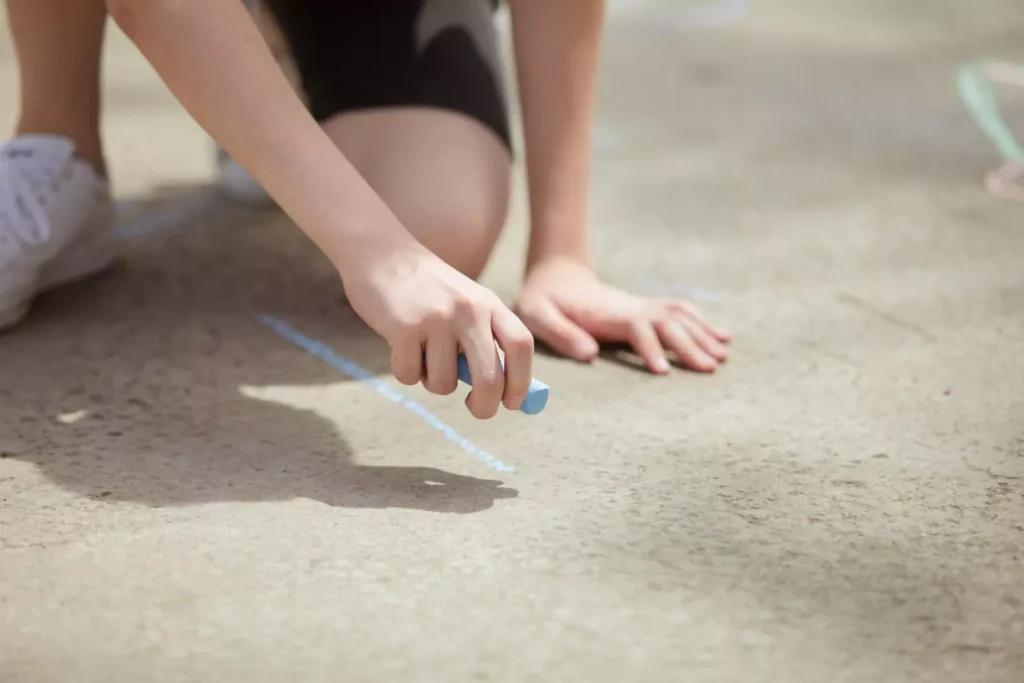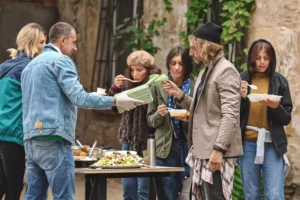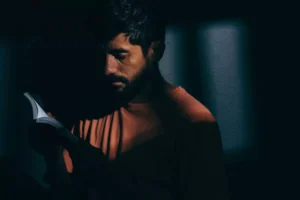Tomorrow my friend Lynn and I will break open a box of chalk and take a walking, chalking tour of our neighborhood. On doors of folks we know and love, we will inscribe the following message: 20+C+M+B+25.
What does this strange equation mean? Simply that the three wise men — Caspar, Melchior, and Balthasar — followed a special star to Jesus, the Son who became man 2025 years ago. The CMB conveniently also stands for the Latin prayer Christus mansionem benedicat, may Christ bless this house.
Lynn and I didn’t make this up. Since the Middle Ages, people have been marking up doorposts and lintels like this during Epiphany. The celebration of Epiphany begins on Jan. 6, and the season ends just before Lent. And, in my view, Epiphany is one of the most important and sadly under-celebrated seasons of the church year.
What is Epiphany?
Epiphany — the word comes from the Greek for manifestation, or to appear or to show forth — is the season the church devotes to seeing who Jesus is. Many churches begin their observance of Epiphany with a recitation or even reenactment of the three wise men bringing their gifts to the baby Jesus. The gifts help us to see who Jesus is: gold is a gift one gives a king; frankincense, a special incense with curative powers that was used by the Israelites in front of the Tent of Meeting, shows us that Jesus is the true tent of meeting, the place we go to meet God; and myrrh, an embalming resin used to prepare bodies for burial, shows us that Jesus was born to die. The wise men’s gifts, in other words, make something about Jesus manifest — and the wise men themselves, as the first people who will take word of Jesus to a larger audience, show forth the infant king to their corner of the world.
During Epiphany, churches also read about Jesus’ baptism, a dramatic event at which God “showed forth” something of Jesus’ uniqueness. This time of year, I am often reminded of a minor character in the movie “Amistad,” a slave who becomes a Christian; after coming to faith, he sees crosses everywhere he looks. That is what Epiphany invites us into: a new kind of seeing.
Epiphany is a season of Light. After we have packed away the Christmas lights with which we strung our trees, we find the church calendar giving us still more time and space to consider Jesus, the Light of the World, and to consider the way that we might get our own lights out from under all those bushels, and manifest Jesus to the world. When you think about it, it is a little odd that evangelical churches, on the whole, do so little with Epiphany, because the season is a great time to introduce ourselves and the world to who Jesus is!
Lesser epiphanies
It’s ironic, and yet unsurprising, that though in church- speak the word “epiphany” directs our attention to Jesus, in common parlance the word is used to denote something very different. To wit, a snippet I read in a student newspaper in Toronto: “That is when I had an epiphany: my makeup is my most important fashion accessory.”
Or consider an art exhibit mounted at Georgetown in 2004. The exhibit, which was created by artist Lisa Austin and which engaged all sorts of artistic media: fabric, furniture, photographs, was called “Epiphany.” The artist hoped that the exhibit would invite college students, who are usually captive to their own myopic social and academic concerns, to “have epiphanies … to make global connections that [he] cannot as a teenager or adolescent.”
In November 2005, Secretary of Defense Donald Rumsfeld said that he had “an epiphany” about the violence in Iraq: “This is a group of people who don’t merit the word ‘insurgency,’ I think…. I think that you can have a legitimate insurgency in a country that has popular support and has a cohesiveness and has a legitimate gripe.”
We now use “epiphany” to mean something individualistic, as in “I had this epiphany the other day, and, you know, realized it was time to break up with Bob.” It is fitting, I suppose, that in our individualistic age, a word that classically directs us to look not at ourselves, but at Jesus, is now used to underscore and lend authority to our supposedly original and important individual revelations.
An open door to us — and Christ
I first went Epiphany chalking four years ago. On a fine January afternoon, Samantha, a teenager in my church, and I waltzed all through our neighborhood, fat yellow box of Crayola chalk in hand. (I told myself that I was doing something noble by spending my afternoon with a church teen, but I suspect that in reality I invited Samantha on my chalking expedition mostly so that I could have an excuse for doing something that might, at first blush, seem a little less than adult.)
We chalked the doors to my apartment, and we chalked the doors to Samantha’s house and her mom’s office, and the doors to the houses of some friends and neighbors. And then we got a little carried away. We started knocking on the doors of people we did not know and offering to chalk their houses. It felt a little like we were selling Girl Scout cookies — except, of course, folks neither had to pay us, nor did they get any Thin Mints out of the deal.
Most of the people on whose doors we knocked had never heard of the custom, and Samantha and I decided that even though most of them turned down our offer, just having the opportunity to explain the Epiphany tradition was a moment of mini-witness.
After being turned down six times in a row, we were about to give up. (Actually to be totally honest, we were about to give up and head to Ben and Jerry’s for a refreshing Epiphany milkshake.) But we knocked on one last door, the door of a tiny green cottage that looked big enough to house a cat and some mice, but no people.
The small, stooped lady who came to the door was not much bigger than a mouse. Samantha and I looked at each other when she answered our knock — I think we were both wondering if we should even bother her. She looked like she was too frail to even stand through our Caspar-Melchior-Balthasar song and dance. But we proceeded. And we were richly rewarded.
“Ohweee!” squealed the lady, whose name, it turns out, was Mrs. Dogan. (And I do mean squealed — I’d assign Mrs. Dogan a more dignified verb if I could, but really, what she did was squeal.) “I haven’t thought about decorating my house for Epiphany since I was a child.” It turns out that, though Mrs. Dogan did not grow up chalking lintels, she was raised in a family that set all sorts of Epiphany candles in the windows, and lit them each night of the season as a testimony to the light of the world. “You girls go right on ahead,” she said, and we chalked away, and even said a special prayer that God would bless her house and make it a light to the world, and then she invited us in for shortbread, and over shortbread she told us all about the little Episcopal church in rural Virginia where she had spent her childhood.
I had always wondered what the connection was, exactly, between Epiphany and doors — I mean, why chalk doors during epiphany? Why not just put up crocheted Epiphany decorations or something? Or chalk sidewalks?
Mrs. Dogan helped me make see the symbolism of doorways. In extending hospitality to me and Samantha and our chalk, Mrs. Dogan was somehow marking her home as places of hospitality to Christ — in sharp contrast to those homes we just read about at Christmas, all those homes who turned the Holy Family away and left Jesus to be born in a barn.
The next Wednesday, around dusk, I walked by Mrs. Dogan’s house. The chalking had faded a good bit, but it was still there — I could see it by the light of the candles she’d lit in her windows.
Ways — in addition to chalk parties — to celebrate Epiphany:
1. Epiphany is, in part, a great capstone to Christmas — knowing that we celebrate Epiphany beginning Jan. 6 can help us actually celebrate Christmas for all 12 days. We can set Epiphany (not, say, Dec. 27) as the day to take down our Christmas decorations.
2. In the 17th and 18th centuries, an Epiphany Cake, or Twelfth Night cake, was popular. The cake — which was basically a fancy spice cake — was baked with a bean inside. Whoever got the piece of cake with the bean became king for a day. (That person also had to foot the bill for next year’s Epiphany cake and festivities.)
3. Epiphany is a good time to sing “What Child Is This?”
So bring Him incense, gold and myrrh,
Come peasant, king to own Him;
The King of kings salvation brings,
Let loving hearts enthrone Him.
Raise, raise a song on high,
The virgin sings her lullaby.
Joy, joy for Christ is born,
The Babe, the Son of Mary.
4. Epiphany is also a great chance to do something, with friends or family, an activity in which you show forth Christ’s light — this might be working at a soup kitchen; it might be building a Habitat for Humanity house; it might be volunteering at a local school, or going on a special Epiphany missions trip.
Copyright 2006 Lauren F. Winner. All rights reserved.









